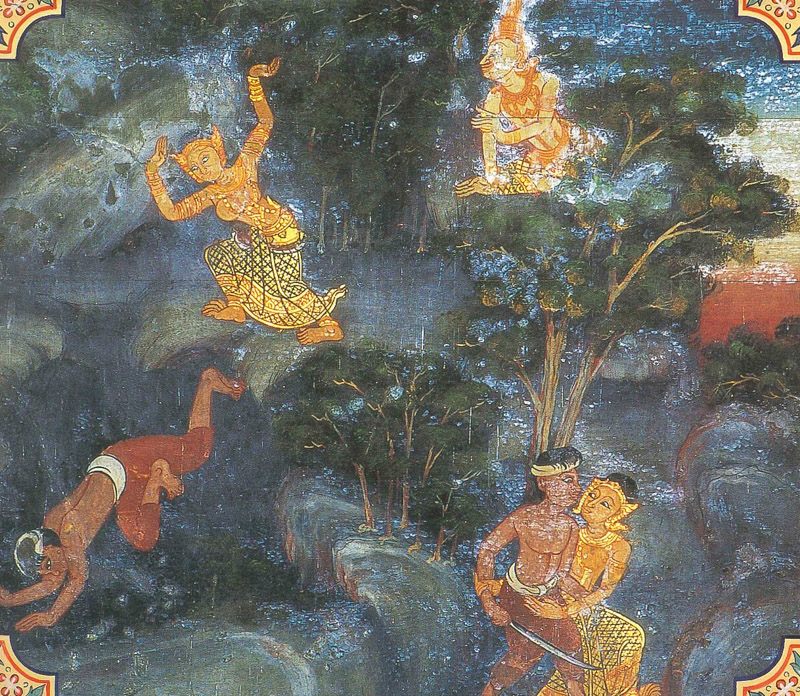
The Bodhisatta was once a tree fairy. A strong, bold thief broke into the homes of many wealthy families, and people pleaded with the king to catch him, so detachments of men were posted around the city. When the thief was arrested, the king ordered his head cut off.
As the thief was being led to the place of execution, Sulasa, a high-class prostitute who earned one thousand coins a night, saw him and fell in love at first sight. She offered a thousand-coin bribe for his release, but the thief was too notorious to just be set free. The governor said if she could find a man as a substitute, he would do it. So when one of her daily customers, a wealthy young merchant, arrived at sunset, she lied that the thief was her brother and said she wanted to save him. The merchant agreed to deliver a thousand-coin bribe for his release, but when he handed it over, he was seized and hidden away, and the thief was secretly sent to Sulasa’s home in a covered carriage. The execution was delayed until very late that night so nobody would see it was another man beheaded in place of the thief. Then the merchant’s headless body was impaled and the matter was over; the thief was free.
Sulasa stopped her liaisons, and she and the thief lived together happily. But after a few months, the thief tired of this life. He decided to rob and kill Sulasa and leave. He told her that while he was being hauled away by the king’s men, he had promised to make an offering to a tree fairy who lived on a mountaintop, and the fairy was now threatening him because he had not yet done so. He had his wife put on all her best jewelry, and they went to the mountain with a crowd of people in tow. When they arrived, the thief told their followers to stay down below, and the couple climbed the peak alone.
At the summit, atop a tall cliff, the thief told Sulasa his real intent. Shocked, she reminded him that she had saved his life and been completely dedicated to him, pleading with him to spare her life—she would give him her jewels and money and serve as his slave if he did. But he only wanted the valuables and would not let her live, so she quickly devised a plan to kill him. “I have never loved any man more than you,” Sulasa said. “Let me give you a proper goodbye.” She walked around him three times, kissed him, got on her hands and knees, and laid her head on his feet. She then crawled to show honor on all four sides, and when she got behind him, she leaped up and threw him over the cliff to his death. Seeing this, the Bodhisatta noted that sometimes women can act wisely.
Sulasa walked down the mountain, and when her servants asked where her husband was, she told them it was none of their business and went home.
In the Lifetime of the Buddha
The prostitute was an earlier birth of a servant of Anathapindika, a wealthy supporter of the Buddha known for his extreme generosity. One feast day when the servant was going to the royal park, Anathapindika’s wife gave her expensive jewelry to wear. A thief (the thief of the past was an earlier birth of him) wanted to steal it, so he flirted with her during the day, giving her fish, meat, and alcohol.
That evening, when people lay down to sleep, the servant went to find her suitor, and he suggested they go someplace more private further away. She felt they were already in a place private enough to do anything they wanted to do and realized he must want to kill her and steal her jewelry, so she needed to act. She told the thief she wanted to drink some water and took him to a well. As he stooped over to draw the bucket up, the servant pushed him hard down the well and threw a brick at his head, killing him.
Back home, the servant told Anathapindika how she almost lost the jewelry, and later he told the Buddha about it. The Buddha told him this story so he knew that it was not the first time the servant had been clever and killed that thief.
